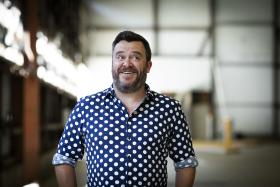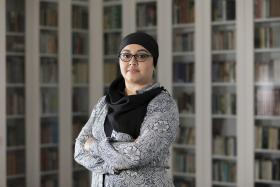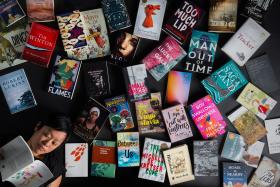The reading group meets once a month, on a Friday night. There are nine of us at full strength, all women and mostly lawyers; as a writer and literary critic, I am one of the outliers. We discuss fiction and non-fiction, written by men and women, of the present and the past. We have a wine-enhanced but otherwise formal and focused discussion of the book to hand, and the person whose turn it is to lead the discussion must also bring the supper.
As this long-established group’s most recent recruit, I have always accepted without question its conventions and rules. One of these, which I embrace, is that fruit and cheese followed by coffee and cake constitutes a delightful evening meal. But another makes me uneasy: the quantification of literary merit. For at the end of the serious half of the evening, before we move on to supper and gossip, we must each give this month’s book a score out of ten. It’s a way of closing the discussion, of feeling that we have achieved something. It focuses our minds; most of us feel we should give reasons for our score. The average score is somewhere around seven, though I have seen a handful of threes, and once a ten. But although we discuss individual strengths and weaknesses, we usually circle around the question of what we think literary merit actually is.
The most brutal answer to this question is that merit is whatever the dominant culture, the individual or group in power, and/or the prevailing orthodoxy says it is. This is true of any endeavour not susceptible of precise, objective measurement. Ask any failed would-be beauty queen. If there are measurable criteria for a position or a part or a prize — do they have a PhD? Can they sing a convincing high C? Did their souffl collapse? — then, for anyone who fits these and is therefore successful, their endeavours can be reasonably supposed to have got them there on merit. But the question of what literary merit is has been coming up periodically in my professional and pre-professional life since 1971, when I started university and immediately began to wonder about the logic of an English I ‘survey course’ with Chaucer’s Prologue to the Canterbury Tales at one end and Joseph Heller’s Catch-22 at the other. My introduction to literary scholarship, to those great works of English literature that were presented to us as being representative of what Matthew Arnold called ‘the best that has been thought and said’, was chronologically bracketed by a Geoffrey and a Joseph, with an assortment of Williams, Johns and Davids in the middle.
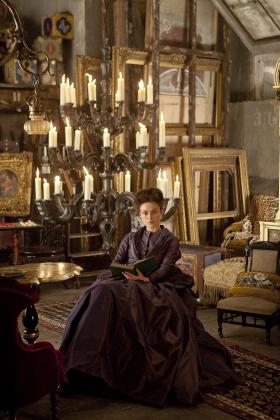
I think there are three kinds. The first is to do with textual and structural skill: clarity of line in narrative or argument, character construction, dialogue, imagery, metaphor, sentence rhythm, word choice, breadth and variety of vocabulary and syntax. The second is about content: deep understanding of subject and theme, clarity of vision, convincing representation of the world and of ideas about it, including the individual writer’s view of good and bad in the world. And the third is the kind of merit that effectively uses the first kind in the service of the second: style as the best expression of substance.
For many readers, literary merit lies in their personal, sometimes physical, response. They will tell you that when they read this book, they laughed, they cried, they threw up, they were sexually aroused, the hair on the back of their necks stood up, they flung the book across the room. They will confidently judge a book to be bad if they are bored by the substance or annoyed by the style, or if they don’t like any of the characters, or if they think the book is not ‘relevant’ or ‘relatable’, or if it contains implicit or explicit expression of social or political views with which they disagree. In my former life as a literary academic, I once had to mark an essay by a fundamentalist Christian student who dismissed Wuthering Heights as a bad book on the grounds that it was unChristian.
But have these personal responses no currency at all when it comes to deciding about merit? A former academic colleague presenting a seminar paper on reader-response theory gave it a title that was asking a serious and important question: ‘If It’s Crap, Why Do I Cry?’
The notion that writing has no literary merit if it expresses, at any point, a world view or opinion that you dislike and reject is an irrational one, you might think. But I belong to the generation of serious female readers who came to the conclusion, as feminist literary theory gained ground in the 1980s, that DH Lawrence — in the 1970s still a much-revered author and featuring prominently in English Department courses across the land — was an insufferable sexist porker, and threw all his books away.
I can’t stomach them to this day, but the point here is that my personal distaste has little to do with the presence or absence of literary merit. All it means is that I find his views of sex and women disturbing and degrading, and glance askance at his brand of sexualised mysticism. Ernest Hemingway, like Lawrence, was a great and original writer, but I never want to read any more of his books either.
When such writers as Helen Garner or JK Rowling, hitherto revered for their work, suddenly say or do something that damns them forever in the eyes of the people who were formerly their biggest fans, the word ‘betray’ pops up a lot. In Garner’s case, this was her views as expressed in The First Stone; in Rowling’s, her public stance on matters transgender. The idea that one has been ‘betrayed’ by a writer suggests a personal, even intimate, connection: an assumption that the writer’s earlier work somehow made a personal promise that has now been violently broken. These readers’ emotional responses to the writer shift accordingly, and they decide that the books they used to love must, after all, be bad.
But, harking back to the point about using style in the service of substance, here’s a scene from Garner’s The Children’s Bach:
… she picked up off the counter one of those little fourpage bulletins on duplicator paper which announce the results of inter-pub darts and pool competitions. There was a joke at the bottom of the page. She read it.
‘Gynaecologist to dentist: “I don’t know how you can stand your job, smelling people’s bad breath all day.”’
Her legs surprised her: that old, almost forgotten sensation, as if all the blood was draining rapidly out of them, leaving them fragile and chalky, unable to support her. They do hate us, she thought. The weight of disgust that loaded the simple joke made her bones weak. She thought, I can’t bear it, I can’t. She thought, I should be able to bear it by now. It has just caught me off guard.
Young feminists maybe have been angry with Garner, and some of them remain angry, but this particular scene is nothing less than a piece of feminist activism. Lionel Shriver’s novel We Need to Talk About Kevin, with its dismaying subject matter, its overt violence, its unpleasant characters and its grim world view, distresses many people but it is an undeniably good book. Shriver is openly hostile to identity politics and has made deliberately provocative gestures to this effect at literary events. In a recent article in The Spectator she even argued that Britain should worry about eventually being overtaken by citizens of colour, recalling the openly racist and grotesquely paranoid theory of the ‘Great Replacement’.
Yet she is also the woman who wrote this:
… the trouble seems rooted in the nature of beauty itself, a surprisingly elusive quality and one you can rarely buy outright. It flees in the face of too much effort. It rewards casualness, and most of all it deigns to arrive by whim, by accident. On my travels, I became a devotee of found art: a shaft of light on a dilapidated 1914 gun factory, an abandoned billboard whose layers have worn into a beguiling pentimento collage of Coca-Cola, Chevrolet, and Burma Shave, cut-rate pensions whose faded cushions perfectly match, in that unplanned way, the fluttering sun-blanched curtains.
Like so much good writing, this combines depth of quality and originality in the observations themselves with choice after choice of the mot juste, of Shriver finding and pouncing on the word that says most exactly what she means.
Elusive. Dilapidated. Beguiling pentimento, fluttering sun-blanched curtains. Not ‘bleached’, which is what nine out of ten people would have written: ‘blanched’. Which is more particular, and more evocative, and more precise.
The problem is that one instinctively wants to devalue the writing of someone whose ideas and pronouncements one dislikes, and more forcefully to deny literary merit to a book that suggests or implies those ideas and pronouncements. For example, and despite the fact that his name was widely bandied about for years as a potential winner of the Nobel Prize for Literature, I feel that way about Philip Roth. But it is intellectually dishonest. And it is lazy.
So if literary merit does not reside in readers’ individual and subjective responses, where then does it reside? Rather than trying to write a prescriptive and proscriptive set of rules, which is almost as dreary for the writer as it is for the reader, it makes more sense to choose an example and examine it on its merits. Which brings us to a significant moment in the history of Australian literature: the announcement in Sydney on a cold winter’s night in 2010 that Peter Temple’s novel Truth had won the Miles Franklin Literary Award.
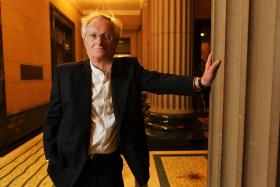
But that was then, and this is now: Truth is crime fiction. It’s not exactly a sequel, more of a companion, to Temple’s previous novel The Broken Shore, which had been longlisted for the award in 2006. The appearance of Temple’s name in the Miles Franklin lists was one sign of the changing attitude to crime fiction and to genre fiction in general: critical assumptions about a hierarchy of literary worth had begun to break down, and the insistence on a clear demarcation between ‘literary fiction’ and ‘genre fiction’ was not as strong as it used to be.
Taken together, The Broken Shore and Truth display every aspect of ‘literary merit’ you could wish for. The panoramic scope of their subject matter establishes a ruthless critique of Australian society at its worst: corrupt politicians, the sexual abuse of children, the secret collusions and mutual back-scratchings of people in high places, the ingrained and endemic racism.
Both novels’ evocation of place and setting is often breathtaking, full of first-hand knowledge and intimations of foreboding that seem to emanate from the very architecture and geography. Their plots are densely structured cat’s-cradles of assorted scenarios from which the reader comes to realise only gradually that everything is connected to everything else. And there are sudden plot turns that kick the investigations along, such as the moment in Truth when Villani realises where the bad guy’s gun has been hidden — ‘It came to him’ — or the scene near the end of The Broken Shore when the deputy headmaster of the elite private school goes rogue in the middle of a guarded conversation, sends away the protesting school lawyer, and tells the detectives what they need to know.
Both novels inhabit the same fictional ‘world’, with the same cast of characters whose backstories are sketched in with great economy and clarity; their general cast of mind is conveyed through small details — it tells us much about Villani, the Head of Homicide, that a sharp-eyed drama teacher once cast him as Prospero in a school production of The Tempest — and their motivations are revealed detail by small detail. But most of all, Temple has an astonishing skill in conveying the feeling between his characters: the slow accretions of trust, the red haze of hatred, the fine strands of hostility in the weave of desire.
Sometimes these relationships are demonstrated through his uncanny ear for dialogue, especially for the ironic, dry-as-a-chip speech patterns of a certain sort of Australian man and sometimes to comic effect that lightens the darkness of his vision. This conversation in Truth between Villani and his offsider Birkerts shows the low-key affection and accord between the two characters and makes me laugh out loud every time I read it:
‘… some mystical lawyer arse she met in Byron Bay. At a wellbeing spa.’
‘Wellbeing spa,’ said Villani. ‘Just trips off your tongue, doesn’t it? What the fuck is wellbeing?’
‘Respect your body. Think positive thoughts. Live in the moment.’
‘What if the moment is absolutely shit?’ Villani said. ‘What if you have no respect for your flabby fucked-out body? What’s the other one?’
‘Positive thoughts,’ said Birkerts, eyes on the road. ‘You think positive thoughts. I don’t think you’re thinking positive thoughts now. At this moment. I feel that.’
Temple’s skill with language is an almost incidental pleasure. Just in the first few short chapters of The Broken Shore, a succession of images conjures up the world through which the main character, Joe Cashin, is moving. His dogs, a couple of black standard poodles, ‘stood with tails up, furry scimitars’. A local woman has ‘a face cut from a hard wood with a blunt tool’. Roadkill being pecked at by ravens is ‘vermilion sludge’. Potato fields are ‘dense with their pale grenades’. On a country walk in a misty early morning, the dogs are ‘appearing and disappearing, bounding patches of dark in a pale-grey world’.
For those of us who love crime fiction for its own sake, the richness and depth of these two novels has a lot to do with the pleasure of observing the way they play with the well-established conventions of crime fiction, at once using and subverting them. Each is essentially a police procedural. In both novels the police detective is a damaged loner with big problems and signature tastes in music, alcohol and/or books. Both have the tight plot full of red herrings and false trails, and the deft interweaving of a romance sub-plot. And there are some deeply horrible moments as the action unfolds, not just of physical violence but also of psychological derangement and of hair-raising, all-consuming dread.
But in her comments about Truth after it won the Miles Franklin, judge Morag Fraser said something that goes to the heart of both books and their quality: ‘We did not think much about the conventions of crime fiction except to note that Temple was able to observe them rather as a poet observes the 14-line convention of the sonnet or a musician the sonata form: as a useful disciplinary structure from which to expand, bend or depart.’
The most radical departure in Truth is the narrative technique, which puzzled and even annoyed many readers at first because of its elliptical, rapid-fire style. But while Villani is not the actual narrator, the story is told mainly from his point of view, and his thought processes and interiority are conveyed through run-on sentences and fragments of syntax that add up to a modified stream of consciousness, a technique firmly associated with literary high modernism. ‘At his desk, the trilling, the incoming paper. Soon, two calls on hold, two people outside. The morning went, he ate a salad roll at 11.30, standing at the window, phoning Laurie.’
And The Broken Shore blows one of crime fiction’s conventions out of the water at the very end; while the usual trajectory of a crime narrative is one of strong closure and the restoration of order, this story ends with some grim new awakenings and investigations as Cashin, pondering some possible new evidence, calls Tracy in the city office :
‘It’s Joe,’ he said. ‘Do me a favour, Trace. Kids missing in June, July, 1988. Boys.’
‘No end to it,’ she said.
‘Not on this earth.’
The Broken Shore was our book for discussion at one meeting of the reading group a few years ago. Everyone but me gave it a nine or a nine and a half. I gave it a ten. I have re-read it, and Truth, at least twice since then. Everything about the language, the plotting, the understanding of human behaviour, the evocation of places I know well, the critique of Australian society, the ideas about good and evil and crime and punishment, everything drags me in and pulls me under. And every time I re-read them — just as with traditional high points of literary merit, like Middlemarch or Anna Karenina or A Passage to India or indeed The Tempest — I find something new. In them, and in myself.
Kerryn Goldsworthy is a critic, writer and essayist. Her most recent book is Adelaide, reissued by NewSouth in 2020. She is a fiction reviewer for The Age/Sydney Morning Herald.
This story appears in Openbook autumn 2022.


